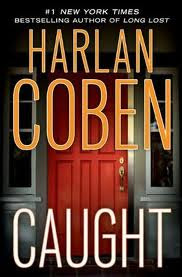
I am predisposed to like Elizabeth Hay's writing, having adored A STUDENT OF WEATHER (2000), GARBO LAUGHS (2003) and the Giller Prize-winning LATE NIGHTS ON AIR (2007). Plus, she is warm, engaging and attentive in person.
ALONE IN THE CLASSROOM flips back and forth in time between 1929, 1937, 1982, 1999 and 2007 as narrator Anne Flood, driven by curiosity and a need to define herself, explores the lives of the women in her family, especially her father's sister Connie whom she has always admired the most, because of her independence, intelligence and style.
In this early paragraph, Hay offers up the heart of the Anne's story:
"
You touch a place and thousands of miles away another place quivers. You touch a person and down the line the ghost of relatives move in the wind....So interwoven are the strands of human life and so rich is the loam in which we lie that the same cemetery holds my grandmother and Ethel Weir and the man accused of her murder and the principal who knew them all, the bane of Connie's existence and therefore an abiding interest of mine."
Yet, we don't begin at the beginning. ALONE IN THE CLASSROOM opens in the Ottawa Valley in August 1937 when "
the whole landscape was a painting come to life" on the day that 13-year-old Ethel Weir goes to pick chokecherries, berries "
abloom with ghostly light that erased itself" and does not return home. Soon the town has picked a suspect, the young man who "
almost stumbled over the corpse." Connie, now a journalist, has recently returned to Canada after working in Europe. In the town library she meets Hannah Soper (Anne's mother) who offers up her mother's boarding house when asked about renting a room. Click click. Part of the unknown future comes into focus.
Time travel back to Jewel, Saskatchewan in 1929 where Connie begins her career as a schoolteacher, working for a seemingly sophisticated but creepy principal, Mr. Ian Burns, known as "Parley." As Anne enigmatically hints, "
Given what Parley Burns did and what happened to him in the end, Connie never tired of mulling over what kind of person he was deep down." You'll spend most of the novel puzzling out what Burns actually did in that prairie classroom and wondering whether or not what happened to him in the end is mete and just. Two things galvanize Connie's relationship to Jewel: a devastating fire and her blossoming trust from Michael Graves, one of her students who has been made to feel less than all of his young life. When Connie discovers in 14-year-old Michael what special talents he has and publicly praises him, he offers her a miniature gift: "
One afternoon he pocketed a piece of blackboard chalk and returned it days later, setting on her desk a minute bird carved like the tiniest of lilies."
For those of you who have spent time in a classroom, you will know the following to be true as it is for Connie when she awakens in Michael a desire for learning:
"A child lies like a grey pebble on the shore until a certain teacher picks him up and dips him in the water, and suddenly you see all the colours and patterns in the dull stone, and it's marvellous for the stone and marvellous for the teacher."
Flash forward to Christmas 1982 where Connie is visiting her brother Jimmy (Anne's dad) and his family in town from Boston where she is back teaching. On Boxing Day, Michael Graves drops by the house to visit with her. Connie's 71 and Michael's 67. Anne, herself married with young children, observes "
I had never seen sex mow everything down before. His eyes stayed on her face, assessing, measuring, saying everything for her benefit, waiting." And, later, when Anne shows Michael her mother's paintings, he remarks, "
They're beautiful, mysterious and full of meaning."
Many months later Anne and Michael reconnect and she is entranced by his way of interpreting the world."'
We forget nothing,' he said. 'It's all there, waiting to be triggered...The facts don't matter....It all blurs and merges and contributes to a way of seeing the world.'" And a decade later at a funeral Michael explains, "
A tender, tender thing comes over you when you get this old. It's a marvellous thing when you learn how to live. As my mother said, you give over."
Anne knows what Michael means: "
A dead child becomes a flower. A gardener weaves her back into the tapestry of life. It doesn't lessen the tragedy, it makes it resurface every spring, a little shock to the heart."
That is what ALONE IN THE CLASSROOM is in its secrets kept and told. It is a sublime little shock to the heart.












